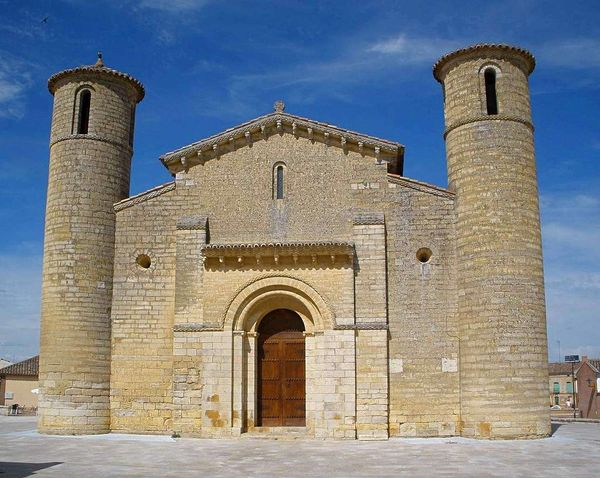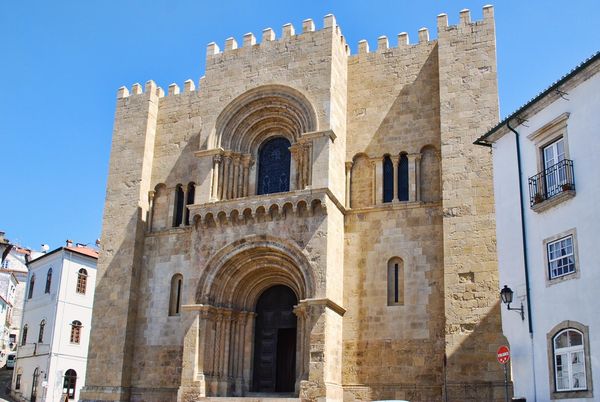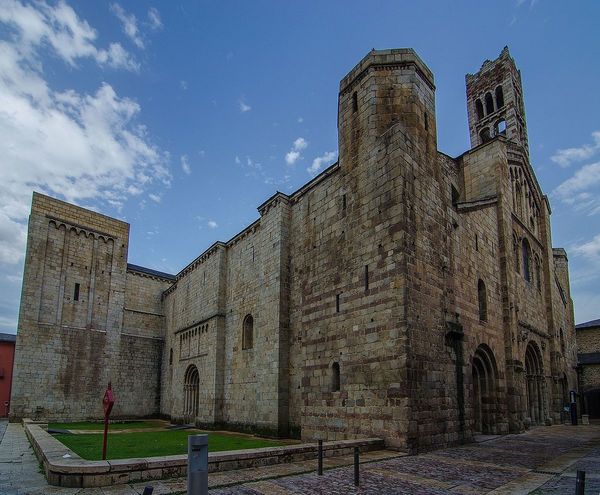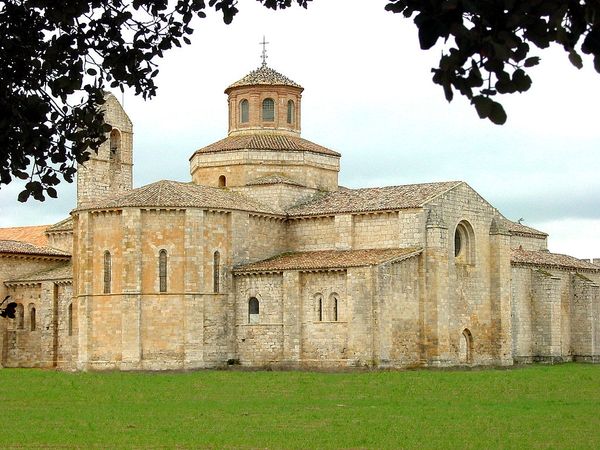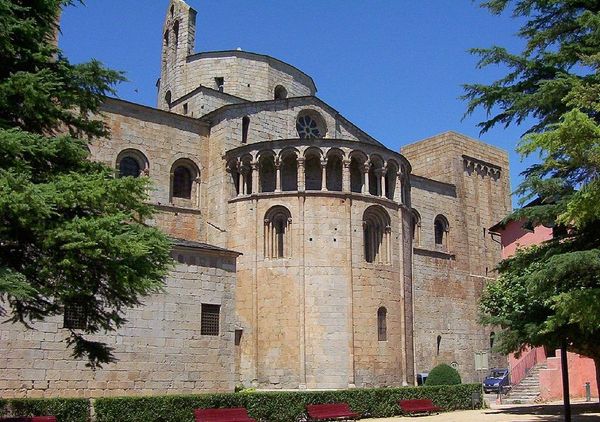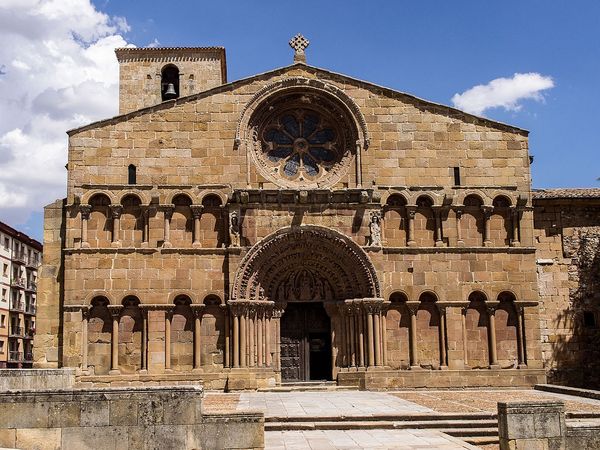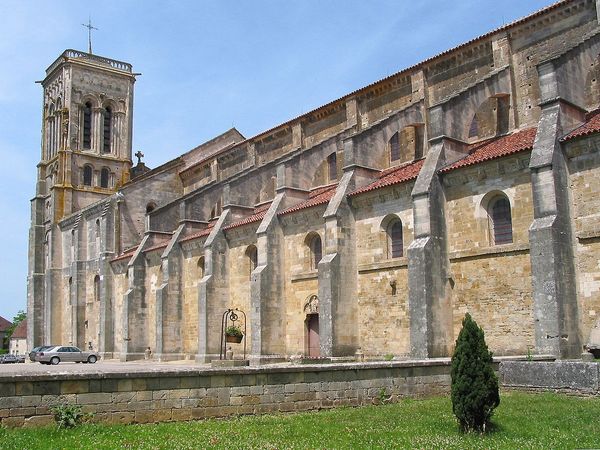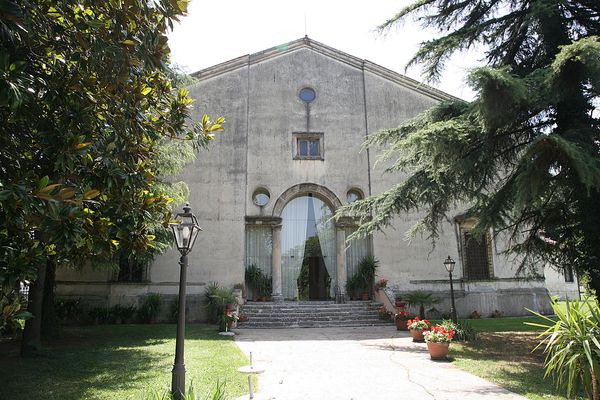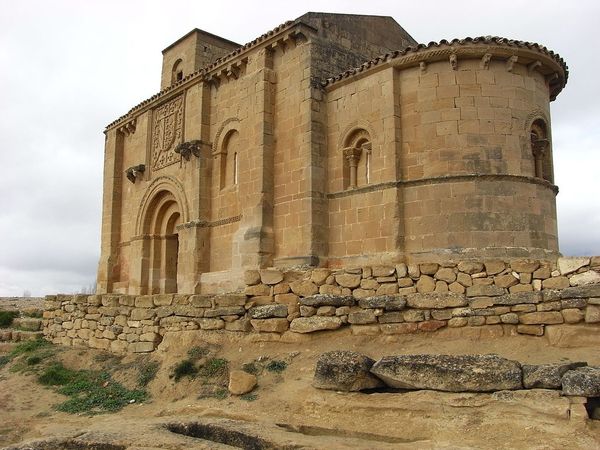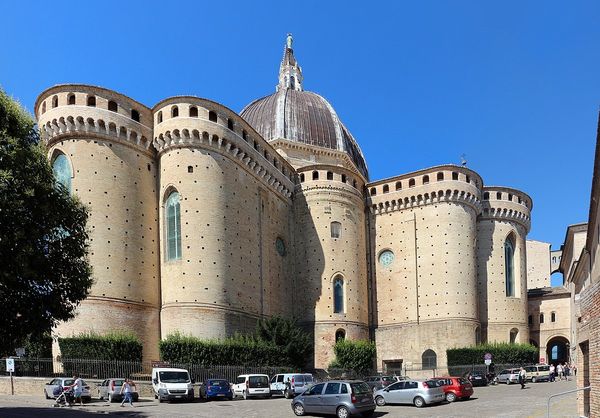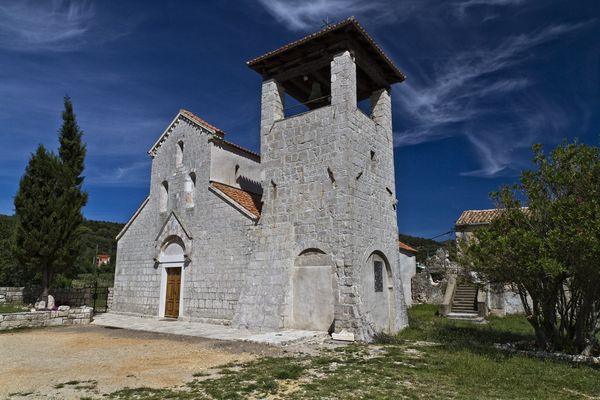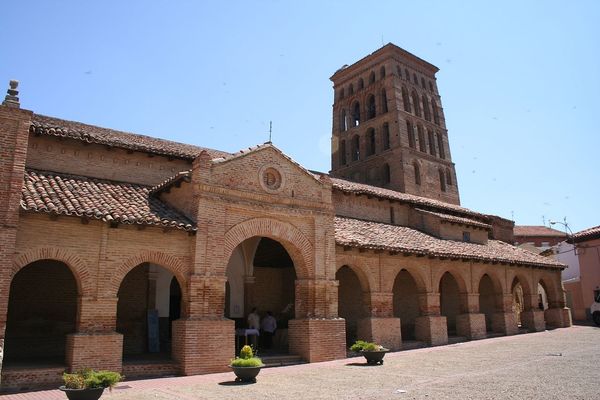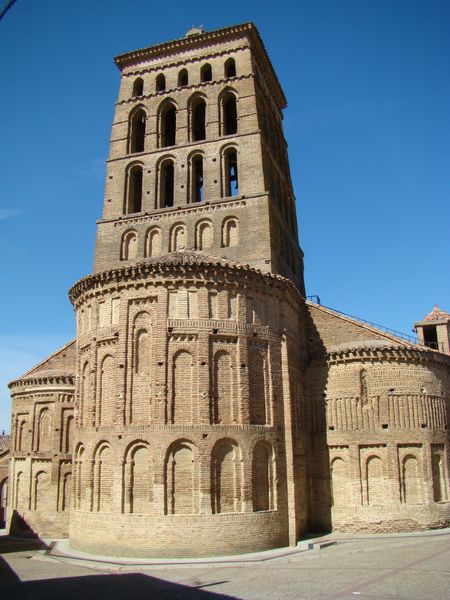
architecture
#
medieval
#
landscape
#
historic architecture
#
romanesque
#
arch
#
architecture
#
historical building
Copyright: Public domain
Curator: This image captures the Church of San Martín de Tours in Frómista, Spain, a remarkably preserved example of Romanesque architecture, dating back to around 1060. Editor: My initial impression is its grounded simplicity— a very stoic and almost meditative atmosphere. The stone radiates an earthy, material presence. Curator: Absolutely, and what’s striking is how the stone itself speaks volumes about the Romanesque period. It reflects not only the available resources but the labor, the very human effort, of construction. Each block was quarried, shaped, and hoisted into place. Think of the communities this involved. Editor: Right! And beyond community, that sandstone, presumably sourced locally, speaks of regional identity. There’s a conscious selection in material. It's more than mere utility. Curator: Indeed. It connects the church intrinsically to the landscape, wouldn't you say? There's this wonderful contrast with the impossibly blue sky here, highlighting the stone's warm tonality. This almost feels to me like staring back through time and seeing the hands that formed this place, what was in their hearts. Editor: Thinking materially too, imagine the logistics of the project itself, transporting this, what, hundreds of tons of stone across what must have been rough terrain. This church wasn't just divinely inspired, it was ingeniously built. It reminds us architecture, even sacred architecture, is rooted in a profound human interaction with the environment. Curator: In this digital image, of course, we're viewing it through layers of reproduction, mediated again. Still, I think the building's soul remains potent, bearing witness. It quietly broadcasts those secrets of both dedication, and backbreaking work, doesn’t it? Editor: Definitely. This image captures that. I almost feel like going to touch one of those walls, not so much for any historical significance, but simply for feeling.
Comments
No comments
Be the first to comment and join the conversation on the ultimate creative platform.
